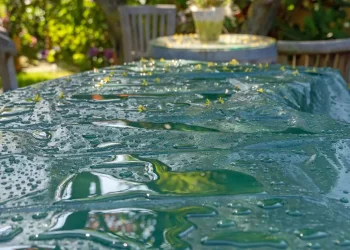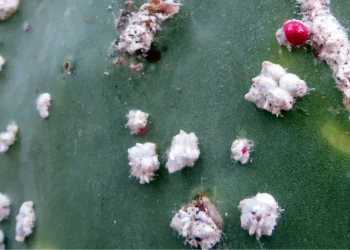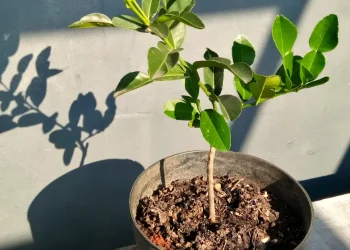Broccoli is a nutritional powerhouse rich in vitamin C, vitamin K, and antioxidants. However, not everyone has access to a garden to cultivate this green gem. The good news is that you don’t need to; you can successfully grow broccoli indoors, right in containers.
Many gardeners begin their broccoli indoors, protecting it from the chill of winter before eventually transplanting it into their garden come spring. However, this guide will show you that you can nurture broccoli all the way from seeds to harvest indoors.
One feature that makes broccoli an ideal choice for indoor cultivation is its relatively low sunlight requirements compared to some other vegetables. While outdoor gardening often depends on ample sunlight, broccoli requires only 6 to 8 hours of direct sun a day. If you compare it with something like peppers that may require up to 12 hours of sun, that’s a jump.
Before you Begin Growing Broccoli Indoors
Before we start, it’s important to discuss what we will need to successfully grow broccoli indoors.
Firstly, not every variety is suitable for growing indoors. After all, the indoor environment has a lot of different light and temperature conditions, but not every variety will do fine in more diffused light or with higher temperatures.
And after that, we’ll take a look at how to select the right container and soil. Although broccoli is easy to grow and it’s not too demanding, better soil equals faster growth.
How to Choose the Right Variety
There are three common types of broccoli – broccoli, the one that you probably know, sprouting broccoli with a larger number of heads with many thin stalks, and broccoli type called purple cauliflower or violet cauliflower (confused? Mee too).
We’ll be growing broccoli type broccoli. Within this type, there are dozens of varieties you can choose from. I’d consider one of these varieties:
- Early Dividend is my favorite taste-wise. It also offers the highest yield. It takes circa 60 to 90 days to grow fully.
- Packman grows a big head, which stands tall above the plant’s foliage, making it very easy to harvest. You can enjoy the yield in approximately 55 days.
- Waltham 29 is a standard broccoli type that you usually see in grocery stores. It will take 60 to 90 days to reach maturity.
- De Cicco is an excellent choice if you want to enjoy homegrown broccoli in a shorter timeframe. It matures in under 50 days. However, it produces slightly smaller heads with a number of side sprouts.
All these varieties are a great starting point. They all require similar conditions, which we will discuss in just a moment, and are fairly easy to grow.
Choosing the Right Container and Soil
Broccoli generally has a moderately deep root system, not extremely shallow but not exceptionally deep either. The depth of its roots can vary somewhat depending on the specific variety.
It’s advisable to provide enough soil depth in your containers, which in this case is at least 12 inches (30 cm) in depth. Choosing a container that is too small can stunt your broccoli growth.
For the soil, go for a well-draining potting mix designed for vegetables or herbs. Keep in mind that broccoli prefers slightly more acidic soil in comparison to other plants, so test your soil’s pH and make necessary adjustments if needed. PH of the soil should be somewhere between 6 and 6.8, ideally towards the lower end.
If the pH is too alkaline, you can use coffee to bring it down. Make sure to check out my guide on adding Instant coffee to plants.
How to Grow Broccoli Indoors
Got everything important ready? Great! Now it’s time to really put our hands into the soil and plant our broccoli. Let’s take a look at it up close, step-by-step.
1. Prepare the Cointainer and Soil
As I already mentioned, you should opt for a pot that’s at least 12 inches (30 centimeters) deep. Ensure there are holes in the bottom of the container for excess water to escape, if not, drill them. Broccoli doesn’t like soggy roots.
Then, fill the container with a well-draining potting mix.
2. Plant the Seeds
The next step is to plant your chosen broccoli seeds. Sow the seeds about a quarter to half an inch deep in the soil. Space the seeds according to the recommended distance on the seed packet, usually at least 3 inches (7 centimeters) apart.
Don’t forget to gently water the soil to moisten it. To speed up the germination, you can cover the pot with a plastic dome or plastic wrap and create a greenhouse effect.
3. Provide Adequate Light and Water with Nutrients
Place your broccoli container in a spot that receives plenty of sunlight. Broccoli prefers around 6 hours of light per day but can tolerate less. If there’s not enough natural light, you can consider using grow lights to supplement. In that case, keep the lights 2-4 inches (5-10 centimeters) above the seedlings to prevent them from getting leggy (growing really long stems), then slowly higher the distance as needed.
For watering, you want to keep the soil consistently moist but not waterlogged. Avoid overhead watering to prevent fungal issues. As with many plants, check the top inch of the soil before watering. If it’s still wet, wait a few days.
Lastly, broccoli is a hungry plant and needs plenty of nutrients for good growth. To provide essential nutrients, use a balanced, water-soluble fertilizer at half strength roughly every 2-3 weeks.
4. Thinning Seedlings
Once your broccoli seedlings have several true leaves, thin them out. The plants should always maintain adequate spacing.
5. Harvesting
As your broccoli heads grow, monitor them closely. The harvesting time will depend on the variety. Also, the look of the ready-to-harvest broccoli will vary, but usually, the heads will be firm and tight.
Use a sharp knife to cut the heads off just below the base of the head.
If you notice that the broccoli is starting to turn yellow, you want to harvest it. Yellowing means that the plant is overripening.
The heads are not the only edible parts. Broccoli greens (the leaves) are also an excellent addition to the kitchen. I love to use them in addition or as a replacement for spinach, which you can also easily grow at home.
Before you go…
When you grow broccoli inside, you already know what it means when the stem starts to turn yellow. But there’s one other issue that you can meet, and that’s when the leaves start to turn purple. The purple leaves are caused by a pigment called anthocyanin, which is released when something is wrong. Check out my other article so you know what to do if that happens…
Why are Broccoli Leaves Turning Purple? Causes and How to Fix It












